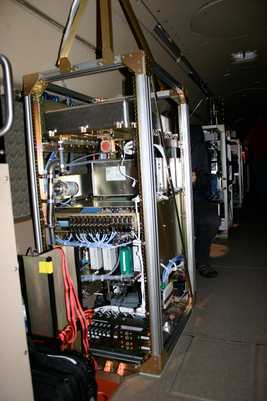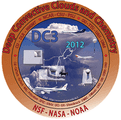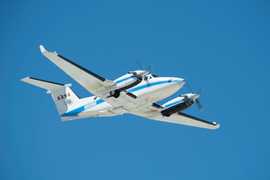The Compact Atmospheric Multispecies Spectrometer (CAMS) is an in situ airborne spectrometer developed by the University of Colorado. CAMS uses mid-IR (3.53 μm) absorption spectroscopy to measure formaldehyde and ethane in the atmosphere. It employs difference-frequency generation (DFG) to produce mid-IR light by mixing two near-IR (1562 and 1083 nm) laser sources. CAMS provides high-precision measurements at a sampling rate of 1 Hz.


Instrument Details
- Spectrometer/Radiometer
- Earth Science > Atmosphere > Atmospheric Chemistry > Trace Gases/trace SpeciesEarth Science > Atmosphere > Atmospheric ChemistryEarth Science > Atmosphere > Atmospheric Chemistry > Carbon And Hydrocarbon Compounds > FormaldehydeEarth Science > Atmosphere > Atmospheric Chemistry > Carbon And Hydrocarbon Compounds
- Troposphere
- 1 Hz
- Point
- 85 THz
- https://doi.org/10.1007/s00340-015-6038-8
Dirk Ritcher, Alan Fried, Petter Weibring
Alan Fried
University of Colorado
Currently unavailable
Unpublished
 Douglas DC-8 44 Campaigns · 180 Instruments |  Studies of Emissions and Atmospheric Composition, Clouds and Climate Coupling by Regional Surveys 2013 North America including portions of Canada, Mexico and the Gulf of Mexico 1 Deployment · 20 Data Products
 Korean United States - Air Quality 2016 South Korean peninsula, including surrounding seas 1 Deployment · 20 Data Products
 Fire Influence on Regional to Global Environments and Air Quality 2019 Northwestern and Southeastern US 1 Deployment · 27 Data Products
 Student Airborne Research Program 2009—2026 Southern California, Virginia Ongoing 19 Deployments · 25 Data Products
| ||||||||||||||||||||||||||||||||||||||||||||||||||||
 Gulfstream-V 8 Campaigns · 37 Instruments |  Deep Convective Clouds & Chemistry 2012 Northeastern Colorado, West Texas to Central Oklahoma, Northern Alabama 1 Deployment · 19 Data Products
| ||||||||||||||||||||||||||||||||||||||||||||||||||||
 Beechcraft B-200 King Air 36 Campaigns · 75 Instruments |  Atmospheric Carbon and Transport – America 2016—2019 Midwest, Mid-Atlantic, Southern US 5 Deployments · 17 Data Products
|
Filter data products from this instrument by specific campaigns, platforms, or formats.